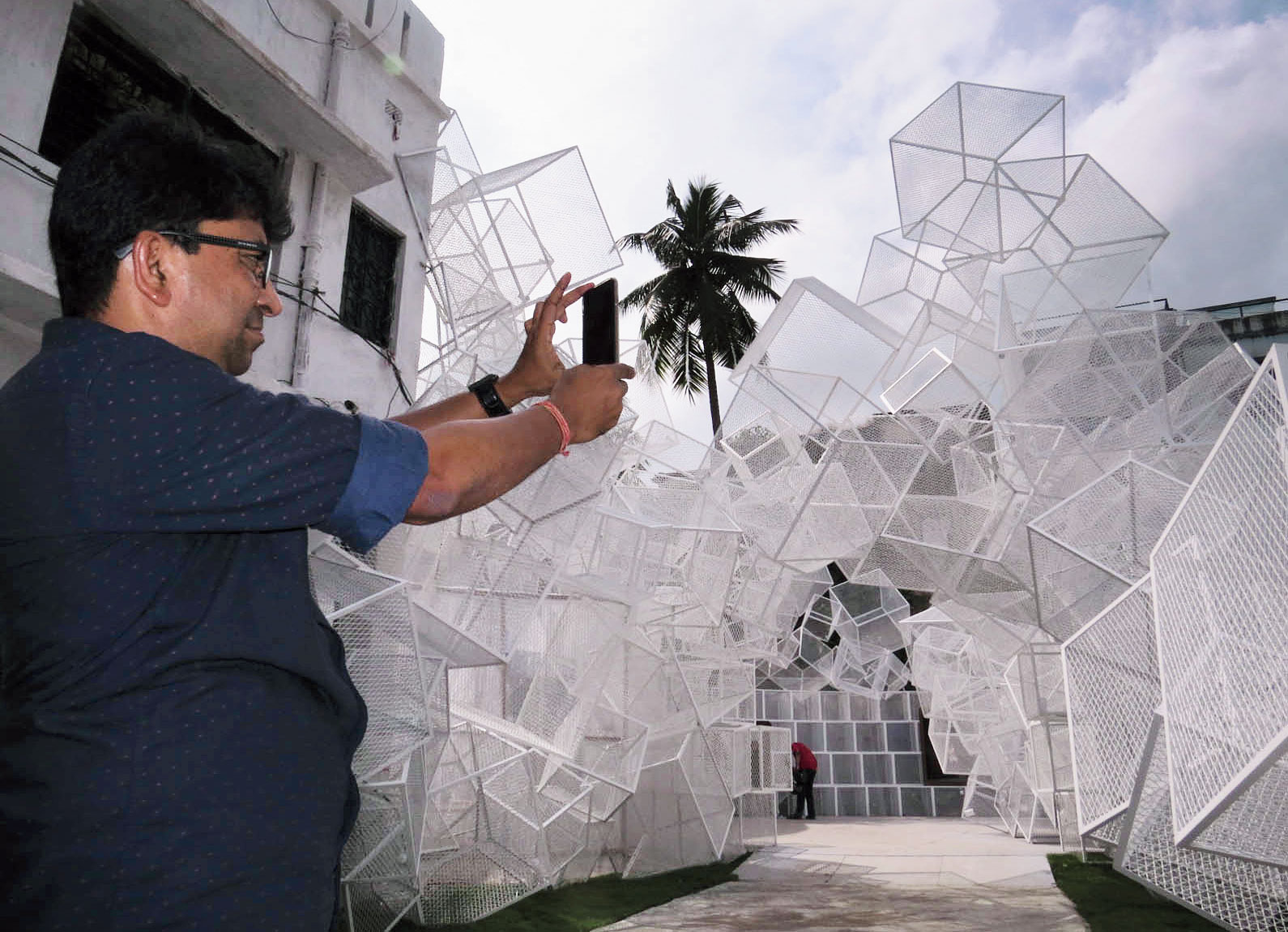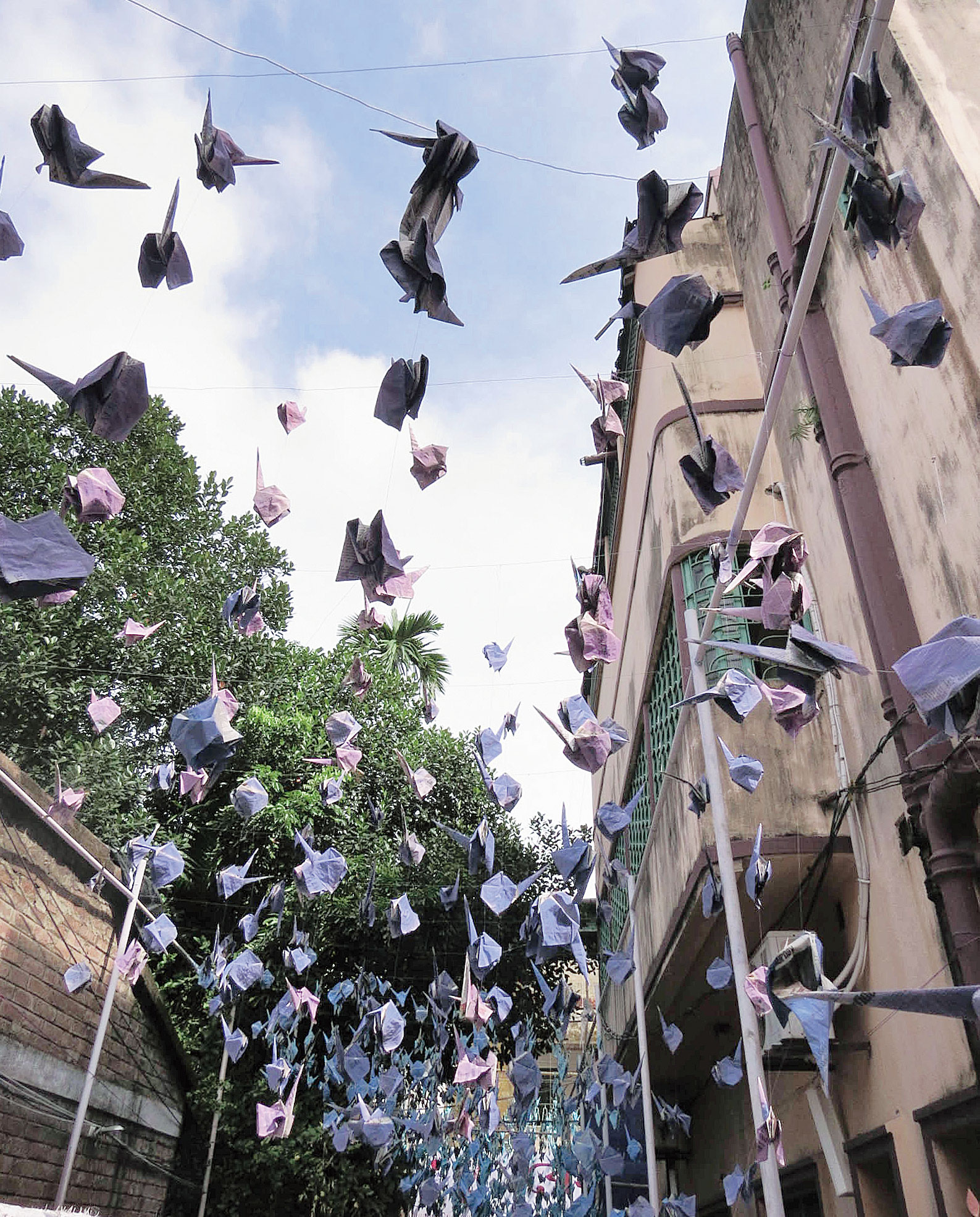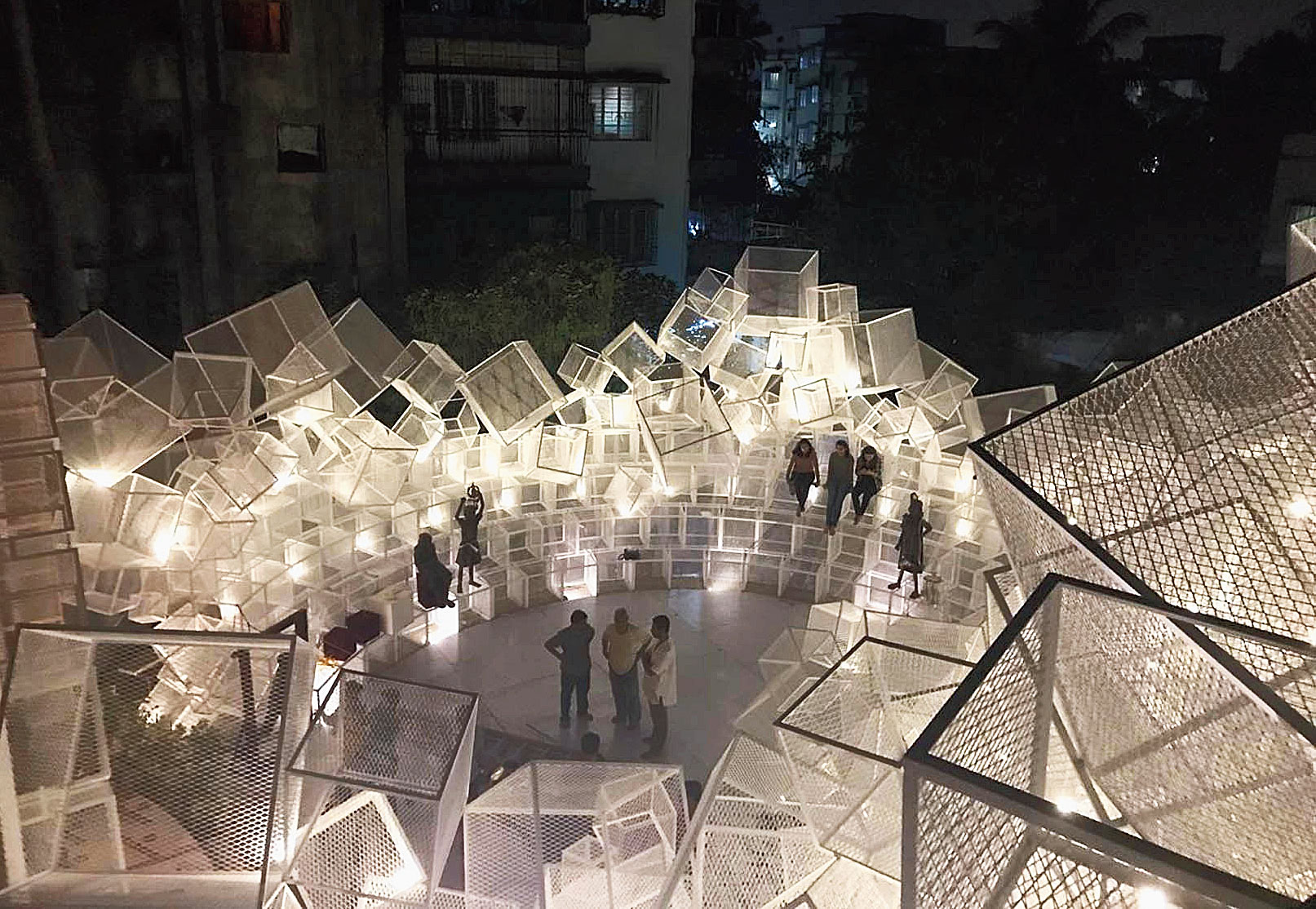Abin Chaudhuri, the man whose design studio is behind architectural landmarks in the city such as Nazrul Tirtha and The Newtown School, is debuting on the Durga puja stage this year.
“We were trying to convince him for the last five years. Finally, he has agreed,” said Sandipan Banerjee, convenor of Behala Nutan Dal.
The puja was inaugurated by chief minister Mamata Banerjee on Tuesday. Two days later a call came from Karnataka for the pandal to be replicated in some form at the Bengaluru By Design, India’s first design festival dedicated to the public, in end-November.
“I had multiple offers but once I decided to take the plunge I chose the trickiest location to work in — a patch of land inside an alley surrounded by buildings,” smiled Chaudhuri, showing Metro around the site on Thursday.
One condition he set to the organisers was that he would not cover the buildings, which has long been the norm in the neighbourhood. “It was a challenge I took. I would not let windows of houses be blocked,” he said.
His pandal is completely open to the sky. In fact, it can hardly be called a pandal in the traditional sense. It has no framework.
Cubes of mild steel wire meshes tilted at odd angles to each other and rising in a heap, which threatens to topple at any moment — the structure is a picture of rebellion against the orderly world that stands frozen in time. Cubes create a semblance of an arch under which one walks in.
Inside, in front of the goddess, the cubes are neatly set on their sides, one over the other, in a semi-circle, as if creating an arena where the lowest rung of cubes are the seats. Tension builds up with height as the imposed order of the arrangement is broken and the individualism of angularity takes over.
When the sun is bright, shadows replicate the formation on the ground. At night, the cubes are lit up mostly in white, as if basking in moonlight. Some sections are illuminated in coloured light. In these sections, suddenly there is movement amid the stillness — of a flock of birds, their shadows fleeting by on the cubes. This is a bit of magic achieved by a technology called projection mapping.
“It is an extreme example of fragmental geometry. I got the idea on seeing how creativity in children today is getting crushed under the burden of regimentation. They need to break free to give expression to their individuality,” said Chaudhuri.
Which is why the divine children are not by the mother goddess — a beautiful creation of Narayan Sinha in copper finish — but are scattered around the courtyard, doing their own thing.

Abin Chaudhuri takes a picture of the installation that he describes as an “extreme example of fragmental geometry” Picture by Sudeshna Banerjee

Birds in flight, made of coloured newspaper and paper boxes, hang over the alley that leads to the puja site. Picture by Sudeshna Banerjee
Chaudhuri acknowledged that an architect’s take on interpretation of space is different from that of an artist and Calcutta is used to seeing the latter in Puja pandals. “An artist thinks of spatial design in terms of craft and elements. What we do is create layers in space,” he said, adding architecture students were taught to create designs with cubes in the first year of the course.
Every bit of the Nutan Dal pandal, he pointed out, is recyclable. “The cubes stand on four welded tags and will be taken apart later.”
It took his team, led by Sohamdip Sinha Roy, 20 days to make the boxes and 10 days to put them together.
A pandal Chaudhuri had created in 2012 for a Kartik puja in Bansberia, Hooghly, where he grew up, had gone places. A model of that colourful bamboo pavilion became part of a travelling exhibition of the Museum of Modern Art, New York. It won an award from the Chicago Athenaeum in 2013 after picking up the Black Elephant for being the Best of Show entry at the Kyoorius Awards in Goa.
“For me, this is an experiment of public urban insertion for which I have not charged a penny. It’s been a thrilling experience. But I have no plans to become a regular player in the Puja field,” he smiled.











